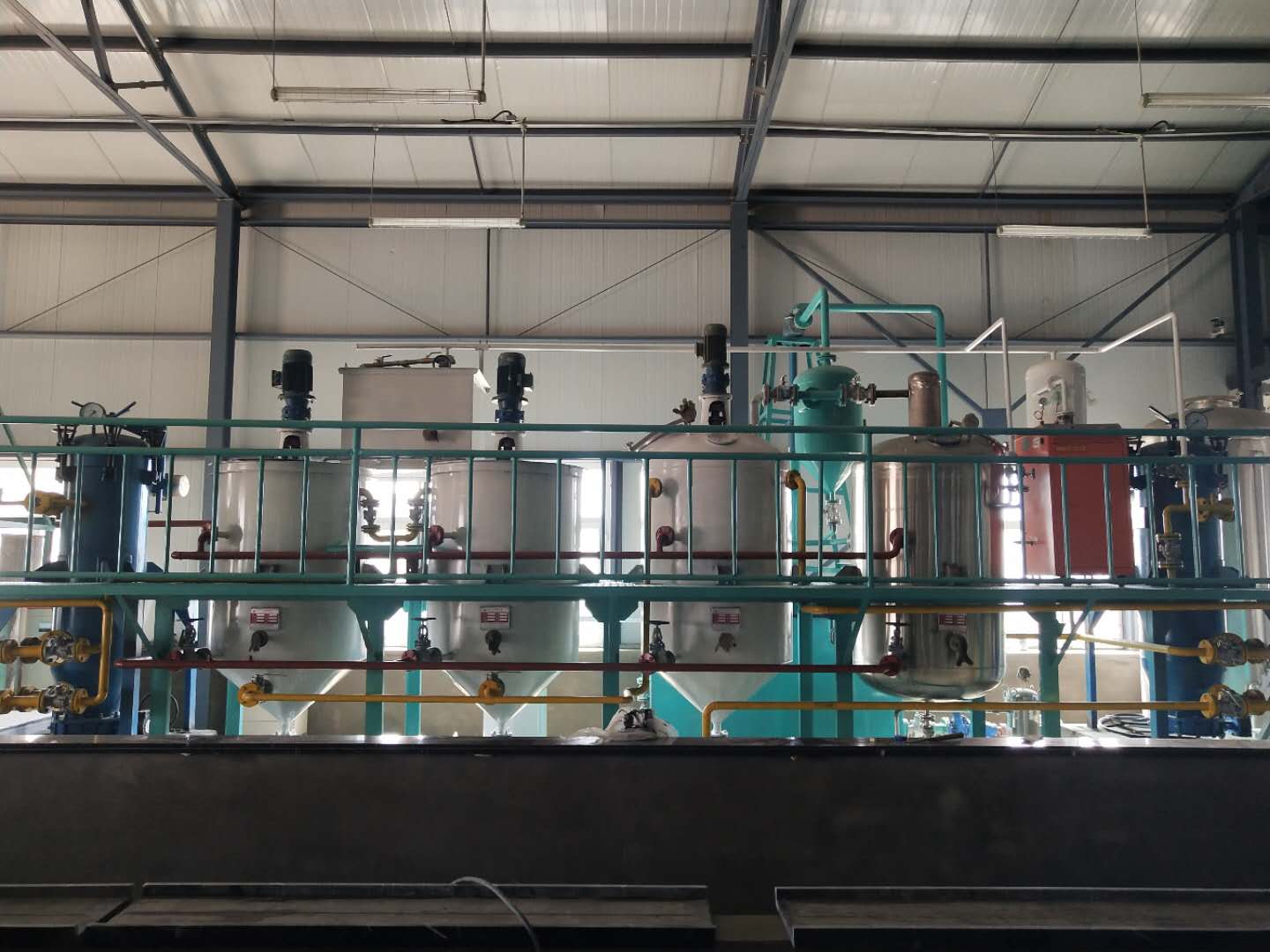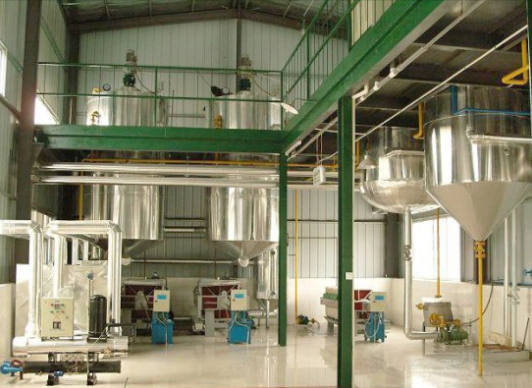Deacidification of edible oil is an important step in the refining process, which directly affects the quality and taste of the refined oil. Free fatty acids (FFA) are mainly removed by deacidification. The content of free fatty acids is high, the acid value increases, the oil is easy to rancid and is not easy to store, so deacidification is an indispensable section of the edible oil refining process.
There are generally two ways to deacidify edible oil: chemical deacidification and physical deacidification. Chemical deacidification is to use acid-base neutralization method. After degumming is completed, NaOH solution is added to stir to neutralize free fatty acids to form soap feet and settle out. Physical deacidification refers to the use of steam to precipitate fatty acids in the deodorization tower, and the product is still fatty acids. The choice of deacidification method can be considered from three aspects, one is the nature of the oil itself and the processing output, the second is the initial capital investment, and the use of refined oil.

Chemical deacidification is generally aimed at oils with low yield or low free fatty acid content, such as soybeans. The FFA content of crude soybean oil is generally relatively low, and the cost of chemical deacidification is low. The auxiliary materials needed-the amount of lye is not large, and chemical deacidification is more suitable. Furthermore, if you deal with small yield of crude palm oil, such as 1- 5tpd, under the premise of relatively high crude oil quality, chemical deacidification can also be selected.
Physical deacidification is more expensive than chemical deacidification, because physical deacidification is completed in the deodorization tower together with deodorization, and the cost of the deodorization tower is higher than that of ordinary refining tanks. In addition, some crude oils have a high fatty acid content. To make the fatty acid content meet the standard, chemical deacidification is no longer possible, and physical deacidification is required. In addition, the by-product fatty acids after physical deacidification can also be used as a source of profit. The price of fatty acids on the market is more than ten times the price of saponins produced by chemical deacidification.

The third thing to consider is the use of refined oil. A customer in Indonesia needed 5tpd refining equipment, but he requested that the acid price of refined oil be reduced to the national standard so that it could be sold on the market. Therefore, even if the output is small, physical deacidification is required. Therefore, we designed a physical deacidification refining process for him and equipped with corresponding refining equipment. Therefore, engineers need to know your refined oil requirements before they can design corresponding deacidification methods and refining processes.
These are the three factors that need to be considered when choosing a deacidification method. If you have other questions about edible oil deacidification, or you need edible oil refining equipment, you can contact us at any time.
Copyright © Henan Zhongxing Grain And Oil Machinery Co.,Ltd. All Rights Reserved. Powered by MetInfo